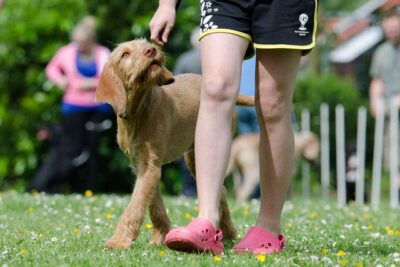



The dog Laika became the first astronaut in history, paving the way for human space exploration. Her journey into space was a significant milestone in the Soviet Union's space program and a testament to the incredible advancements in technology and scientific understanding during the mid-20th century.
Laika, a stray dog found on the streets of Moscow, was chosen for the historic mission due to her small size, calm temperament, and ability to withstand the harsh conditions of space travel. She was a mixed-breed dog, believed to be part Siberian Husky and part Terrier.
Before her journey into space, Laika underwent extensive training to prepare her for the rigors of space travel. She was trained to withstand the confinement of a small capsule and the intense vibrations and noise associated with rocket launches.
The Soviet Union was in a fierce competition with the United States during the Cold War, and the space race became a symbol of technological and ideological superiority. The Soviet space program, led by Chief Designer Sergei Korolev, aimed to achieve significant milestones in space exploration.
After successfully launching the first artificial satellite, Sputnik 1, in 1957, the Soviet Union set its sights on sending a living being into space. This ambitious goal would demonstrate their ability to send humans into space in the future.
Preparing Laika for her historic mission was a complex and challenging task. Scientists and engineers had to design a spacecraft that could sustain a living being for an extended period in space. They also had to develop a life support system to ensure Laika's survival.
Laika was trained to eat a special high-nutrition gel-like food that would sustain her during the mission. She was also trained to be confined in a small space for extended periods, as the spacecraft was not designed to allow for movement.
To acclimate Laika to the intense vibrations and noise of a rocket launch, she was placed in a centrifuge and subjected to similar conditions. This training was crucial to ensure her safety and well-being during the mission.
On November 3, 1957, Laika was launched into space aboard the spacecraft Sputnik 2. The mission was intended to study the effects of space travel on a living organism. Unfortunately, the technology at the time did not allow for a safe return to Earth.
During the mission, Laika's vital signs were monitored, and it was discovered that she experienced increased heart rate and respiration. Despite the challenges, Laika's mission provided valuable data on the physiological and psychological effects of space travel.
Laika's mission was not without controversy and ethical concerns. At the time, the Soviet Union did not have the technology to safely return a living being from space, and it was known that Laika would not survive the mission.
Animal rights activists and scientists around the world criticized the Soviet Union for subjecting Laika to such a fate. The mission raised questions about the ethics of using animals in scientific experiments and the responsibility of humans towards other living beings.
Despite the controversy, Laika's mission provided valuable insights into the challenges of space travel and paved the way for future advancements in human space exploration.
Laika's sacrifice and contribution to space exploration have not been forgotten. Her mission highlighted the risks and challenges associated with space travel and led to significant advancements in animal welfare regulations.
Laika's mission also served as a catalyst for further advancements in the Soviet space program. The data collected from her mission helped scientists better understand the effects of space travel on living organisms and contributed to the development of life support systems for future missions.
Today, Laika is remembered as a pioneer and a symbol of the early days of space exploration. Her legacy serves as a reminder of the sacrifices made in the pursuit of scientific knowledge and the importance of ethical considerations in scientific research.
The dog Laika became the first astronaut in history, embarking on a historic mission that paved the way for human space exploration. Her journey into space was a significant milestone in the Soviet Union's space program and a testament to the incredible advancements in technology and scientific understanding during the mid-20th century.
While Laika's mission was not without controversy and ethical concerns, her sacrifice and contribution to space exploration have left a lasting legacy. Her mission provided valuable insights into the challenges of space travel and helped pave the way for future advancements in human space exploration.
Laika will always be remembered as a pioneer and a symbol of the early days of space exploration, reminding us of the sacrifices made in the pursuit of scientific knowledge and the importance of ethical considerations in scientific research.
Leave a Reply
Related posts